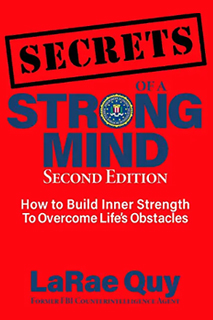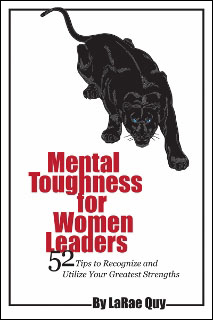The ability to accurately interpret body language is a tricky business. A shrug could mean a person doesn’t know what’s going on, or it could mean they don’t care. When someone crosses their arms, it could mean that they are shutting you out of the conversation or that they are cold and wish you would turn up the heat.
Understanding the nuances of body language plays an important part in your ability to judge how you come across to others. Just as important, however, is your ability to get a read on other people.
Most of us focus on verbal skills but never forget that there are always two conversations going on when we interact with another person. The first conversation is the one where words are used to convey information; while the second one broadcasts thoughts, attitudes, and emotions through the body. If we’re unaware of the non-verbal messages we’re sending, the second conversation could undermine the first one.
As an FBI agent, it didn’t take me long to realize that people can peddle bullshit by the bucket with an honest and open face if it serves their purpose. Teenagers, ex-spouses, and terrorists are excellent examples of how non-verbal communication can tell us more than the words they use when answering a question or trying to get to the bottom of a problem.
Sometimes it takes mental toughness to see through the subterfuge. Are you mentally tough? Take this evidence-based, FREE Mental Toughness Assessment
Often, it’s the things people don’t say that convey the true emotion or thought. Researchers estimate that body language may account for a whopping 65% of all communication.
Here are 10 tips to help you interpret body language:
1: Body Reactions Are Honest
The limbic system is the part of the brain that reacts to events around us—in real-time and without thought.
These reactions are genuine and are considered to be the “honest” part of our brain. The limbic brain enlists the body to send messages about what it is feeling. The body will signal stress and discomfort or excitement and pleasure in a variety of ways, and how we interpret these behaviors is known as body language.
Our facial expressions and gesture far outweigh verbal communication in sheer quantity. It’s fairly easy to tell a lie; it’s much more difficult to show a lie—another reason that nonverbal is more honest than verbal.
How To Make It Work For You: For more information and research on how the limbic brain controls our emotions, and in turn, affects our thoughts and behavior, read Emotional Intelligence by Daniel Goleman.
2: Deceit Is Difficult To Spot
There is no single sign of deceit—no one gesture, facial expression, or muscle twitch that indicates a person is lying.
There are only clues that the individual is feeling an emotion or thought that is not being expressed verbally. Once the point of stress is identified, it’s possible to pursue the cause of the discomfort.
When I interview people, I look for behaviors that would tell me they are ill at ease with one of my questions. Once I asked a businessman named George if he knew Igor—an individual whom the FBI had identified as a Russian spy. George responded, “Yes, but then immediately touched his mouth. I knew he wasn’t lying because FBI surveillance had recorded their meeting, but I also knew that he was bothered by the question. This prompted me to probe further into this line of inquiry.
How To Make It Work For You: It’s crucial that you take note of when a gesture is made in the conversation. Most likely it will be when a specific topic is mentioned or a question is asked.
3: Cluster For Significance If You Want Accuracy
One word, by itself, can mean many things, or nothing. A sentence, however, expresses complete thoughts. Similarly, one gesture can mean anything—it’s only when we put them together that they have meaning. Nonverbal gestures come in clusters so it’s important to observe a person’s initial cluster of gestures to establish a norm.
It’s a serious error to interpret a solitary gesture.
A scratch of the head can mean confusion or it could indicate a serious case of dandruff. Many people punctuate conversations with constant gestures and movement while others are relatively still. The key is to notice how these gestures change during a conversation.
How To Make It Work For You: Once you’ve identified the topic that has created stress from the gestures you’ve noticed, reword the question or come at it from another angle to see if the gestures are consistent.
4: Create A Baseline
Patience is required to accurately read other people. Deception can only be identified if a baseline of the other person’s responses is established.
Non-threatening and innocent questions are likely to receive honest answers, and this is how norms are established. They can be used to measure responses to more probing questions later on.
Norms help to distinguish between a personal quirk and a contradiction in behavior. Contradictions are not goalposts when trying to detect whether someone is lying. Rather, they are signposts that suggest there is either deception, or there’s more to the matter.
How To Make It Work For You: If you’re not certain whether the person is being deceitful, or just isn’t telling you everything, return to non-threatening questions to get a better sense of patterns in their responses. When do they touch their mouth? When do they purse their lips? It will take more than one conversation to create a baseline.
For more detail on body language, read What Every Body is Saying by Joe Navarro.
5: Look For Changes In Behavior
To read body language you must determine when in the conversation the individual is stressed or relaxed; when they are uncomfortable or comfortable
The key is to notice when the person’s gestures start to deviate from the baseline you’ve created earlier. Chances are good that the question or point that you made was the catalyst for the behavior change.
Most people start off a conversation in an honest and trusting manner. This is when it’s important to formulate the baseline. When the conversation moves into a more sensitive area, that is when to begin looking for changes in behavior.
How To Make It Work For You: When you notice a gesture that is an aberration from a person’s normal behavior, proceed cautiously. Take the time to reflect on the spoken words that initiated the gesture. If possible, let those words hang in the air to see if the person is willing to explain why the topic created the concern. Often, the person will ask a question for further clarification. This can be a gold mine because they’ve given you a clue about what is bothering them.
6: Carefully Interpret Facial Expressions
The face is the one part of the body that is most often used to conceal feelings and emotions. Dr. Paul Ekman, an expert on facial micro-expressions, states that the face is the primary place we display emotion. This is also why the face can be incredibly untrustworthy. According to Ekman, we lie with our faces because that’s what we’ve been told to do since childhood.
“Take that look off your face,” was one of my mom’s favorite expressions as I grew up.
The face can lie and tell the truth, often at the same time. While the face can be untrustworthy, most people still leak micro-expressions. These expressions are fleeting and can be easily missed.
How To Make It Work For You: Look for changes across the entire face because our emotions are complex. Often, people experience a variety of emotions at the same time. Since emotions can blend, ask yourself whether you are looking at a single expression of emotion or multiple ones. It’s difficult to read micro-expressions with accuracy so don’t jump to conclusions unless other body language confirms your thoughts.
Read Telling Lies by Paul Ekman.
7: Watch Eyebrows and Foreheads
Not all of the muscles that produce facial expressions are equally easy to control. Some muscles are more reliable than others. The forehead is the chief focus for reliable muscle movements. It can reliably indicate negative emotions such as sadness, grief, distress, and even guilt.
Eyebrow actions—raised and lowered—are the most frequent facial expressions, and they are usually made in conjunction with forehead movements. When eyebrows rise and pull together, it is a reliable muscle movement that occurs with fear, worry, apprehension, and terror. The eyebrows express true emotion. When a person is calm and positive, there are fewer forehead furrows and eyebrow movements unless they are used to emphasize speech or as question marks.
How To Make It Work For You: Psychologists have found that worry, surprise, or fear can cause people to raise their eyebrows in discomfort. We also raise our eyebrows when we lie. Of all facial expressions, foreheads and eyebrows are the most honest.
8: Examine Those Smiles
Another reliable facial action is the mouth area. Anger, tension, frustration, and fear can all lead to a narrowing of the lips. All of these emotions can easily be concealed by a smile, however.
But, for a smile to be genuine, there should be crow’s feet around the eyes and the cheeks must push up.
A smile is a sign of submission, which is why many dominant individuals don’t smile. I always smiled when I began my interviews because it would directly influence how people would respond to me. The last thing I wanted to do was intimidate them or put them on the defensive. On the contrary, I wanted to put them at ease so I could create a baseline of their behavior. Smiling helps create empathy, something that can be important if you want concessions in a negotiation.
How To Make It Work For You: As a general rule if you don’t see crow’s feet around the eyes, they are faking a smile. However, researchers have found that people do a pretty good job of faking a smile, even when they aren’t happy. If the crinkles around the eyes aren’t there, the person’s probably not genuinely happy. But just because the crinkles are there doesn’t necessarily mean they are happy.
9: Notice The Hands
There are more nerve connections between the hands and the brain than between any other part of the body.
Our brain is hardwired to engage our hands to accurately communicate our emotions, thoughts, and feelings.
I make an effort to shake hands with people I meet. The handshake that conveys equality is when both hands are vertical. As a woman, I’m frequently in situations where a male will offer a dominant handshake—his palm faces down. Palms down indicate dominance (think of Adolph Hitler’s Nazi salute).
To counter a dominant handshake, I simply move to the right of the individual so we are almost side-by-side. He is forced to move his hand into the vertical position as I move to his right.
How To Make It Work For You: Open palms have been associated with truth, honesty, allegiance, and submission throughout Western history. Former FBI agent Joe Navarro explains that humans have evolved to show nervousness without using words. For example, when people repeatedly stroke their neck or touch their face with their hands, they’re probably uncomfortable. Your job is to find out why.
10: Believe What The Feet Are Saying
As unglamorous as it sounds, the feet are the most honest part of the body.
Children and adults alike bounce up and down when they see someone, or something, that makes them happy.
It’s not uncommon for answers to be forthcoming and body language to be relaxed after we’ve established trust. However, as conversations move into more probing and sensitive areas, notice whether they uncross their legs and sit with their feet flat on the floor with ankles locked. This doesn’t mean they are lying but it does indicate that they’ve become stressed at some point in the conversation.
How To Make It Work For You: Try to avoid conversations where the other person is behind a desk because you will miss the leg cues when you hit a point of discomfort or when they lie and give dishonest answers.
© 2021 LaRae Quy. All rights reserved.
You can follow me on Twitter, Facebook, Instagram, AND LinkedIn
Are you mentally tough? Take this evidence-based, FREE Mental Toughness Assessment
Check out my new online training program at www.SecretsOfAStrongMind.com
Get my new book, “Secrets of a Strong Mind (second edition): How To Build Inner Strength To Overcome Life’s Obstacles”
Author of “Mental Toughness for Women Leaders: 52 Tips To Recognize and Utilize Your Greatest Strengths”








Another incredibly helpful and insightful post LaRae! I love this topic and encourage participants in my leadership programs to be very aware of the non-verbal cues. When words and body language don’t match, it is best to believe the body language. I also have learned that when someone is excited or passionate about what they are saying, their voice usually is louder and filled with excitement.
Thanks LaRae for your important tips!